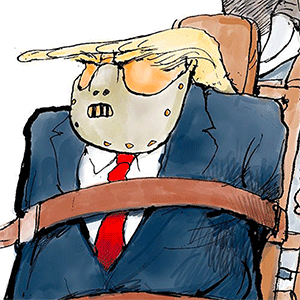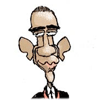From the Right
/Politics
A Formidable President Storms Ahead
Some thoughts spring to mind after President Donald Trump's 100-minute address to Congress.
The first is that this 78-year-old man has amazing resilience and perseverance. Consider that in the past 12 months, he has had to spend hours listening to a kangaroo court proceeding before a hostile judge in New York, has maintained a campaign rally ...Read more
Getting to Denmark
Sooner or later, The New York Times catches on to the news. In the case of immigration policy, the news it has caught up with is that mass immigration, legal and illegal, from less-developed countries is politically toxic.
That news was relayed in a Feb. 24 article and thread on X by reporter David Leonhardt, a writer of center-left sympathies ...Read more
The Policies of European Elites End in Tears
If you follow these things closely, you may have seen a clip of the chairman of the Munich Security Conference breaking down in tears, unable to speak any further while reflecting on Vice President JD Vance's speech there. This breakdown is remarkable because the chairman, Christoph Heusgen, is not a minor apparatchik but a sophisticated and ...Read more
Why Were Hopes of the 1990s Dashed?
As one who shared the hope, after the fall of the Berlin Wall in November 1989, that representative government, guaranteed liberties and global capitalism laced with some measure of welfare state protections would spread across the globe, I naturally look back over the intervening long generation and ask what went wrong.
In the 1990s, it seemed...Read more
Trump Rides the Vibes, for Better or Worse!
After a flurry of activity -- the president's tariff threats and showdowns with Mexico and Canada, his expressions of interest in Greenland, the policy changes obtained by Secretary of State Marco Rubio's trips to Panama and El Salvador, the release of arrested Americans in Venezuela -- it seemed clear that the focus of Donald Trump's foreign ...Read more
Trump Is Moving Fast and Breaking Things!
Move fast and break things. That's the original operating philosophy of Facebook founder and Meta mogul Mark Zuckerberg, and it seems to be the operating procedure of President Donald Trump in these first weeks of his second term.
That makes a certain sense. In a largely successful society, unrocked by revolution, institutions come to be in ...Read more
Is Donald Trump the Second Coming of Andrew Jackson?
The portrait of Andrew Jackson has returned to the wall of the Oval Office, put up in time to greet President Donald Trump as he entered for the first time as the 47th president.
It's a choice Democrats are poorly positioned to criticize, even though the seventh president owned slaves and ordered the Southeastern Indians west on the Trail of ...Read more
Trump Succeeds While His Opponents Fail!
"It is not enough in life that one succeed," the droll economist John Kenneth Galbraith is supposed to have said. "Others must fail."
We're at a moment, in this week before Donald Trump's second inauguration, when the 45th and soon-to-be 47th president is succeeding at just about every enterprise he undertakes, while his political and ...Read more
Facebook Embraces Free Speech: The Masses Win, the Experts Lose!
The times, they are a-changing. The balance of power in the perhaps eternal battle between the experts and the masses has been shifting starkly, even wildly, with the former losing and the latter gaining clout.
That's been most visible in the series of announcements and selfies emanating from the gaudy precincts of Mar-a-Lago. The experts like ...Read more
Toward a Political History of the Last 75 Years
New Year's Day is a good time to take a long look backward with a cautious eye toward possible futures. My guide here is RealClearPolitics analyst Sean Trende's 2012 book "The Lost Majority," whose bold thesis was unduly neglected by political scientists spinning tales of a permanent New Deal Democratic majority.
Trende's thesis instead was ...Read more
Time for Trump to Drop Lawsuits and for the Press to Apologize!
Maybe the lesson this Christmas season is that even if turnabout is fair play, at some point, enough is enough.
Start with the specious lawsuits brought against President-elect Donald Trump, to the great glee of many of his "Never Trump" and Democratic detractors. Some of them, especially Manhattan District Attorney Alvin Bragg's March 2023 ...Read more
Trump's Success: Who'd Have Thunk It?
Who'd have thunk it? The Assad regime collapses in Syria after 54 years. Russian President Vladimir Putin's hold on power seems undermined by imperial overstretch, and the mullahs of Iran have been unable to defend their skies and their leaders' hotel rooms from Israeli attacks.
Leaders of the two largest nations in the European Union have been...Read more
Free Speech: Why a Tech Titan Backed Trump
Why did Marc Andreessen -- inventor of the first internet web browser, and perhaps the prime venture capitalist in Silicon Valley today -- switch from his longstanding support of the Democratic Party and back President-elect Donald Trump this year?
Because, in his view, the Democrats who claim to be the great scourge of "disinformation" are ...Read more




































